The strangest thing happened on the farm this week. I’m a nature girl dawn to dark—I’d rather be in hiking boots than ruby slippers—and yet this event tested my poise and placidity.
You’ll see.
This week in Trackless Wild I thought I’d bring you a farm report in photos, mainly because it’s the kind of life nature lovers will enjoy, and it’s the kind of life that challenges all the dominant narratives of destruction, scarcity, ugliness, and meanness.
Except for the one thing I mentioned.
Let’s start with peaches because hey, this is Georgia and it’s spring. We only have a few trees but they have risen to the occasion.
When I went out to photograph, I spotted a bird’s nest in that very tree. The nest was empty, so—opportunistic me—I briefly rested a peach in the nest, thinking to create a bit of performance art.
I assumed the nest-makers had finished and gone. But lo, a few days later, when I returned to the tree to eat bird-pecked peaches (mockingbirds waste a lot of fruit) (I don’t mind eating after them), the nest contained what it was built for. How had they gotten there so quickly?
Spring here takes on the quality of spontaneous generation.
Sorry for the poor quality photo. I was in a hurry. That nest is holding four blind mockingbirds. The parents are feeding them all day long, back and forth with worms in their beaks.
May the mockers continue to play their Victrolas from the tops of the mulberry trees.
Speaking of mulberries, they are done. Here are the last few.
Before we leave the orchard, I’d like to show you the goumi. We only have one bush, and it was loaded. The berries turned the entire bush red-orange, so it looks dead. See here.
But if you get close, you see this.
The ducks, chickens, and guineas hang around the goumi bush all day long.
I know my farm sounds very exotic. You’re hearing about bananas, lemons, mandarins, figs, something called goumis. We’re just an old farm in the subtropics of southern Georgia, unable to grow food from the tropics (no mangoes) as well as temperate food (no rhubarb). But somehow in this in-between place we have managed to find a delicious and satisfying life.
I think you’ll also want to know that the house finches who built their nest this spring in a cow skull on the porch fledged one young. Here you can see the day the baby perched on the abyss and stared out at the future. Then she leapt. What is not in this photo are both parents, wild with worry, landed briefly on a banana plant 10 feet off the porch.
See the fledgling house finch sitting on the skull?
Now.
Here is the strangest thing of all. This week we walked outside at dusk to feed up. At the back door, beneath The Tree That Births Snakes, two gray ratsnakes were coiled together, copulating. Both of them were easily four feet long.
I love snakes—you know that. I pick them up. I put them in metal buckets and take them across the Ohoopee River and let them out in the wildest place I can find. Otherwise they eat our chicks and our chicken eggs.
But this was a lot. I was pushing Little Fawn, the baby, in her carriage, and all I could think of was, “Them snakes are gonna eat my baby.”
I shuddered. I’m sorry to admit it, but I shuddered. Me. Nature girl, wild woman, snake whisperer.
I couldn’t do it, people. I could not touch those ratsnakes. I begged Raven to let them go, just walk on by and pretend we didn’t see them coiling and writhing at our back door so they could lay some tiny white eggs in the Mother Snake Tree.
“No way,” Raven said. “I have baby chicks just hatching out.”
Do not judge me. You would have run away too.
But Raven—a man who spends a chunk of his day rocking a tiny baby to sleep—grabbed the snake bucket, which has a tight-fitting lid, and one by one he picked up the snakes by their tails and lowered them into the bucket.
They didn’t want to separate, that much was clear.
That’s not the end of the story.
Dark had fallen by the time Raven drove eight miles to the river and released the ratsnake lovers on the riverbank.
Crazy as it sounds, the next evening he walked outside and a single ratsnake—same coloring, same size—lay where the tete-a-tete had occurred the evening before.
“One of the snakes,” I said. “Already back.”
“Not a chance,” said Raven. He caught this snake and put it in the bucket. Of course I’m writing this as if Raven were correct. But I know in my heart he wasn’t, and that I should be saying, “He caught the snake again and put it back in the bucket.” The snake stayed there overnight.
The next morning he returned the single ratsnake to the river.
By afternoon I was watering flowers when I saw a ratsnake stretched out near the hose—same coloring, same size.
The second ratsnake had returned. I turned my back and let her disappear under the thicket of Seven Sister rose.





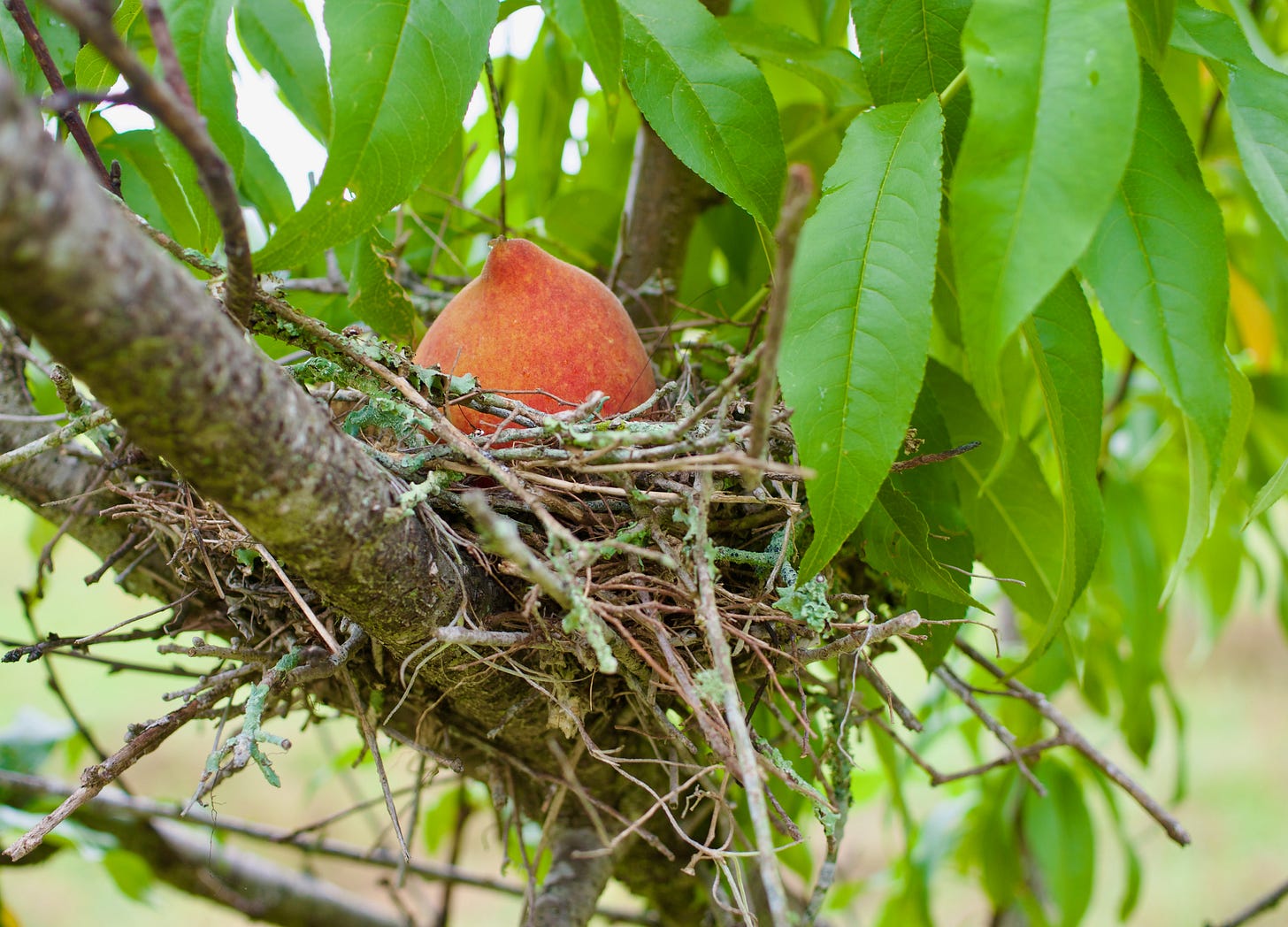
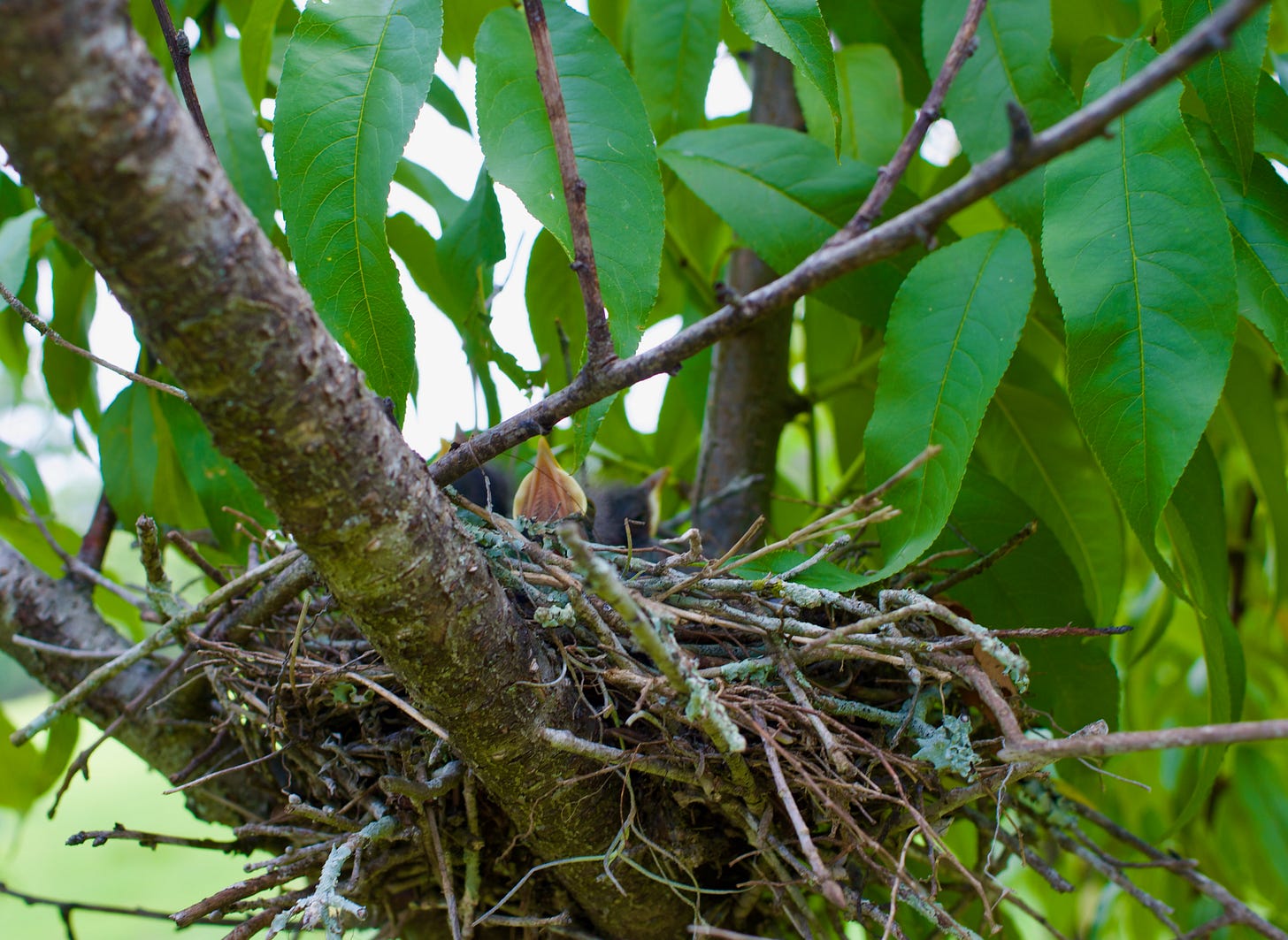
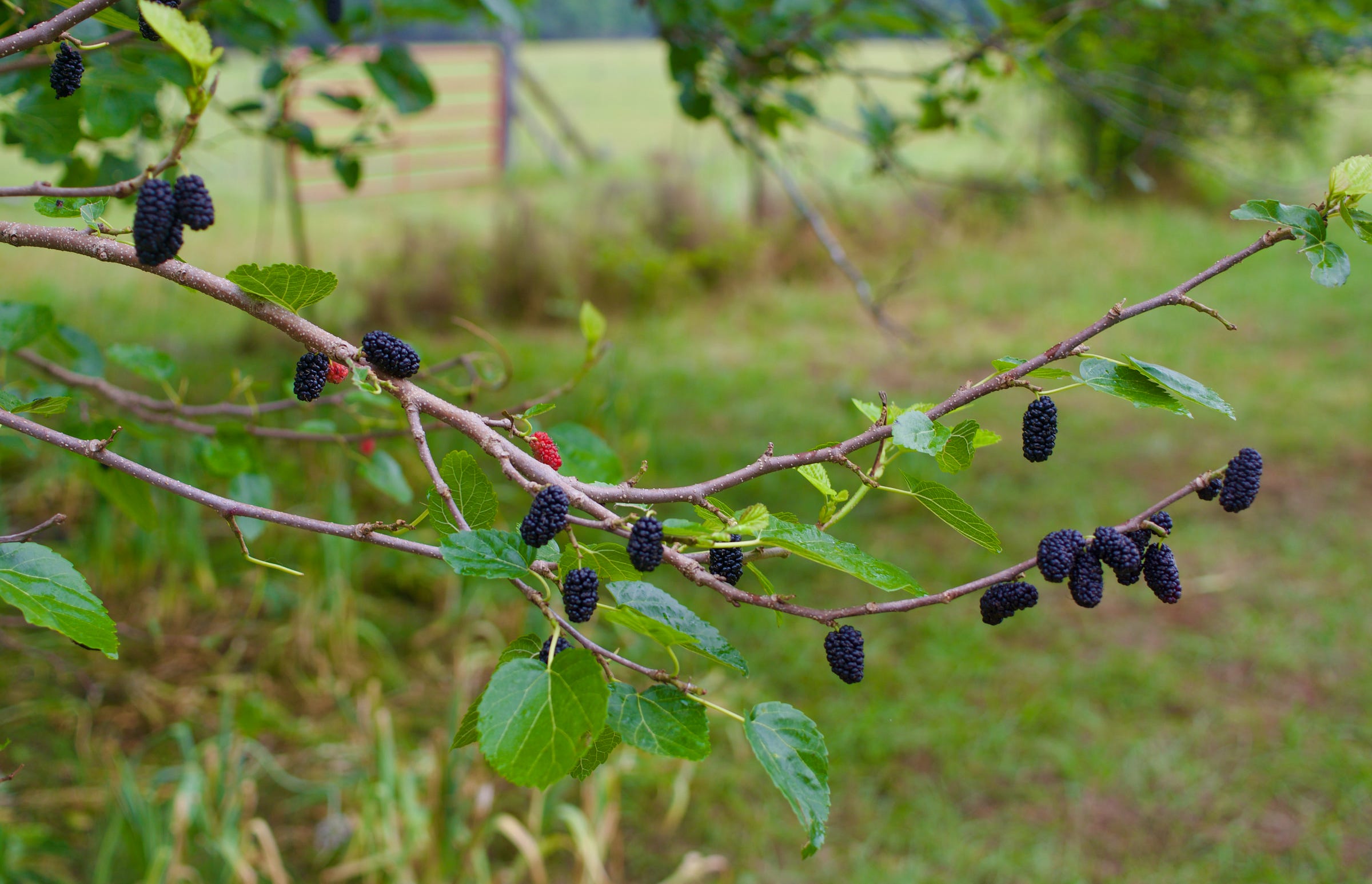

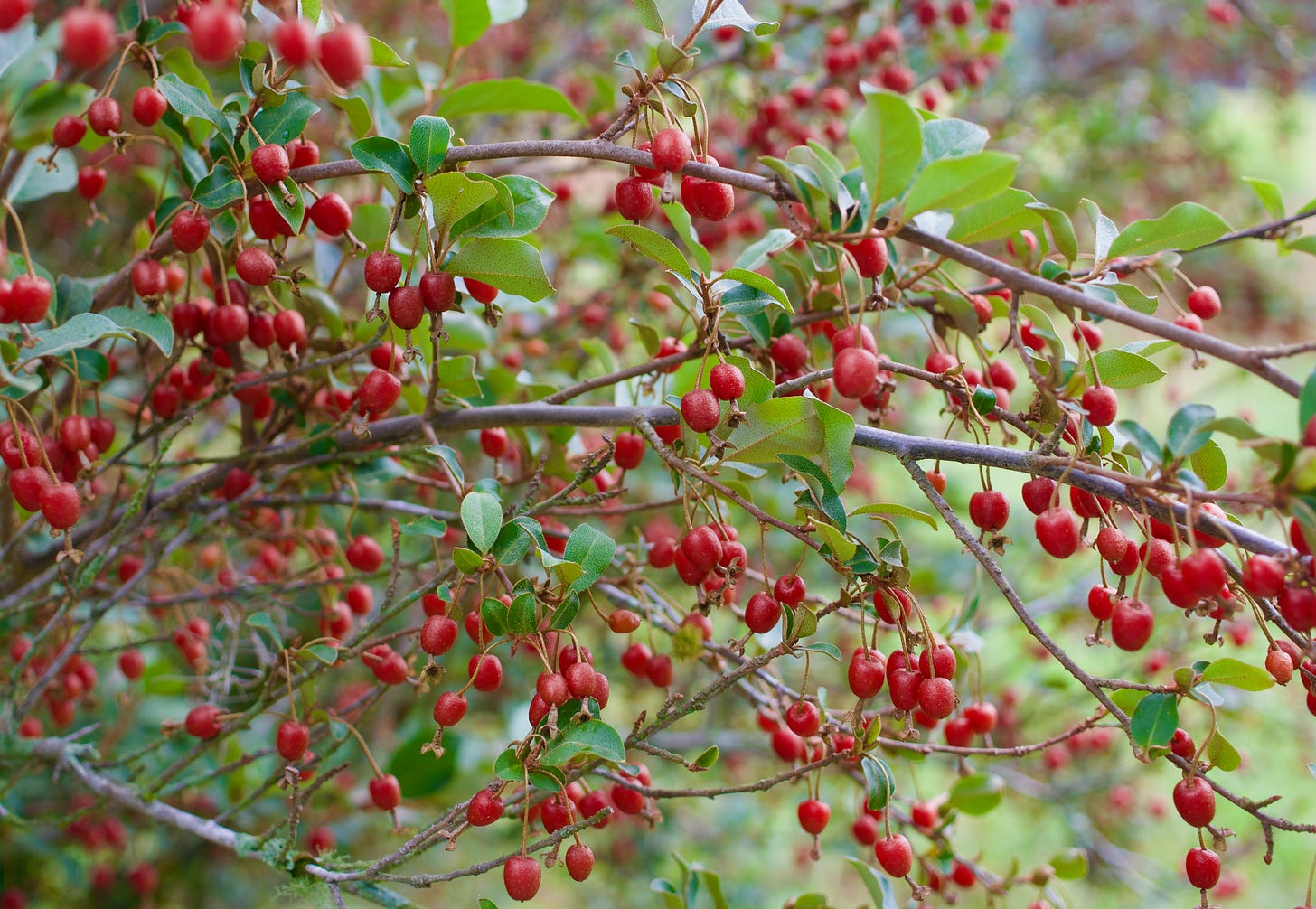

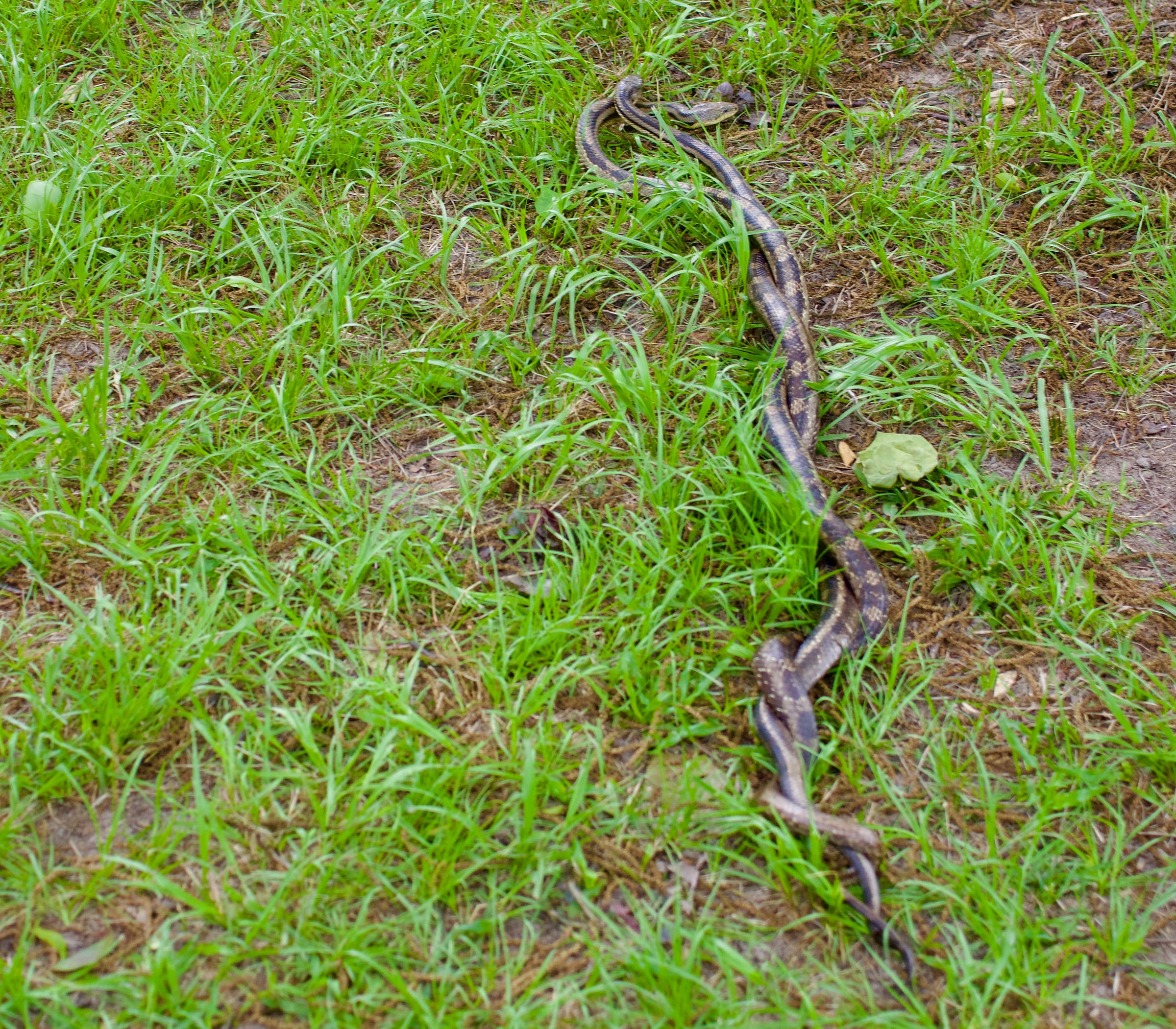



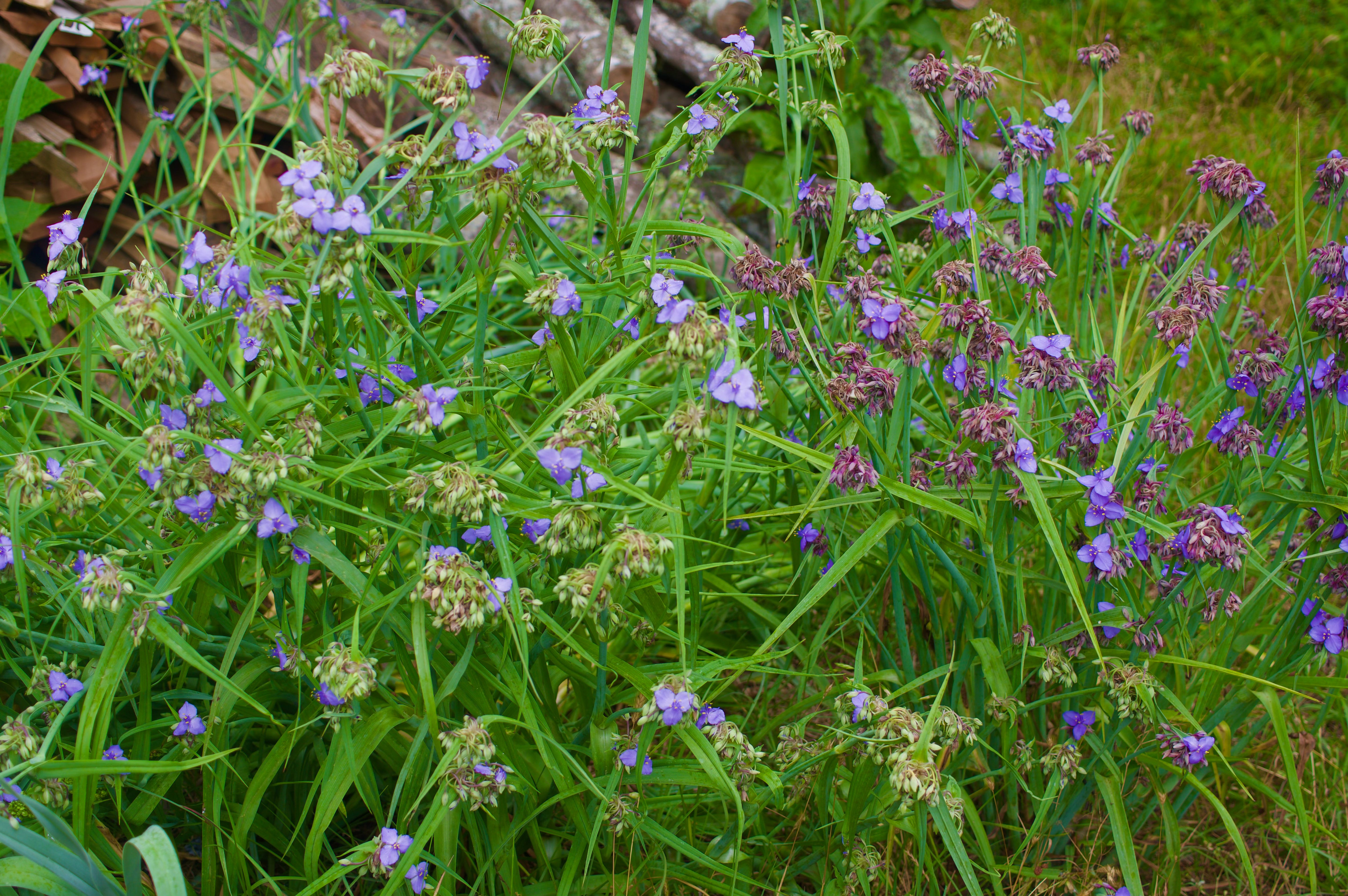
Quite a remarkable story, from rat snakes to mockingbirds! Wonderful to read about. And also remarkable to feel the contrast of your sub-tropical Georgia farm, complete with a fruit I'd never hear of (goumi? what's that, I thought, and was surprised to find it an Eleagnus species). And peaches almost ready to harvest; how wonderful!
The contrast comes in arriving a couple of days ago to our Quebec cottage and admiring the barely budding apple, pear, cherry, and plum trees, along with robust foliage of raspberries and black currants. The serviceberries are barely in flower. Even the cold-hardiest peaches and nectarines are no match for the deep cold and strong winds that this part of Eastern Quebec experiences in winter.
The rhubarb here is up already, stalks a foot tall, thriving in this cool-summer climate. I've been busily using rhubarb and strawberries from last season's harvest, stored in the freezer over winter, preparing for the season to come.
Yes, there have been many rat snakes around our farm so far this year too! Hubby says they’re HUGE and scare him when he comes across them while feeding up. They hang around the areas where the royal palm turkeys lay their eggs. One afternoon, one of the hens was pecking & dragging a smaller rat snake away from her nest.
My reaction to rattlesnakes is what changed in me after the grandboys started hanging around with us on the farm. I don’t like to kill them. I prefer to relocate them or let them go their way, but not all the folks who live on the farm feel that way and I understand.
Your orchard is beautiful & abundant! What a blessing!